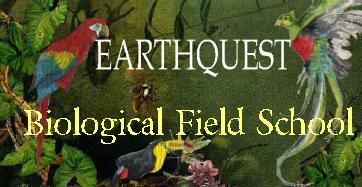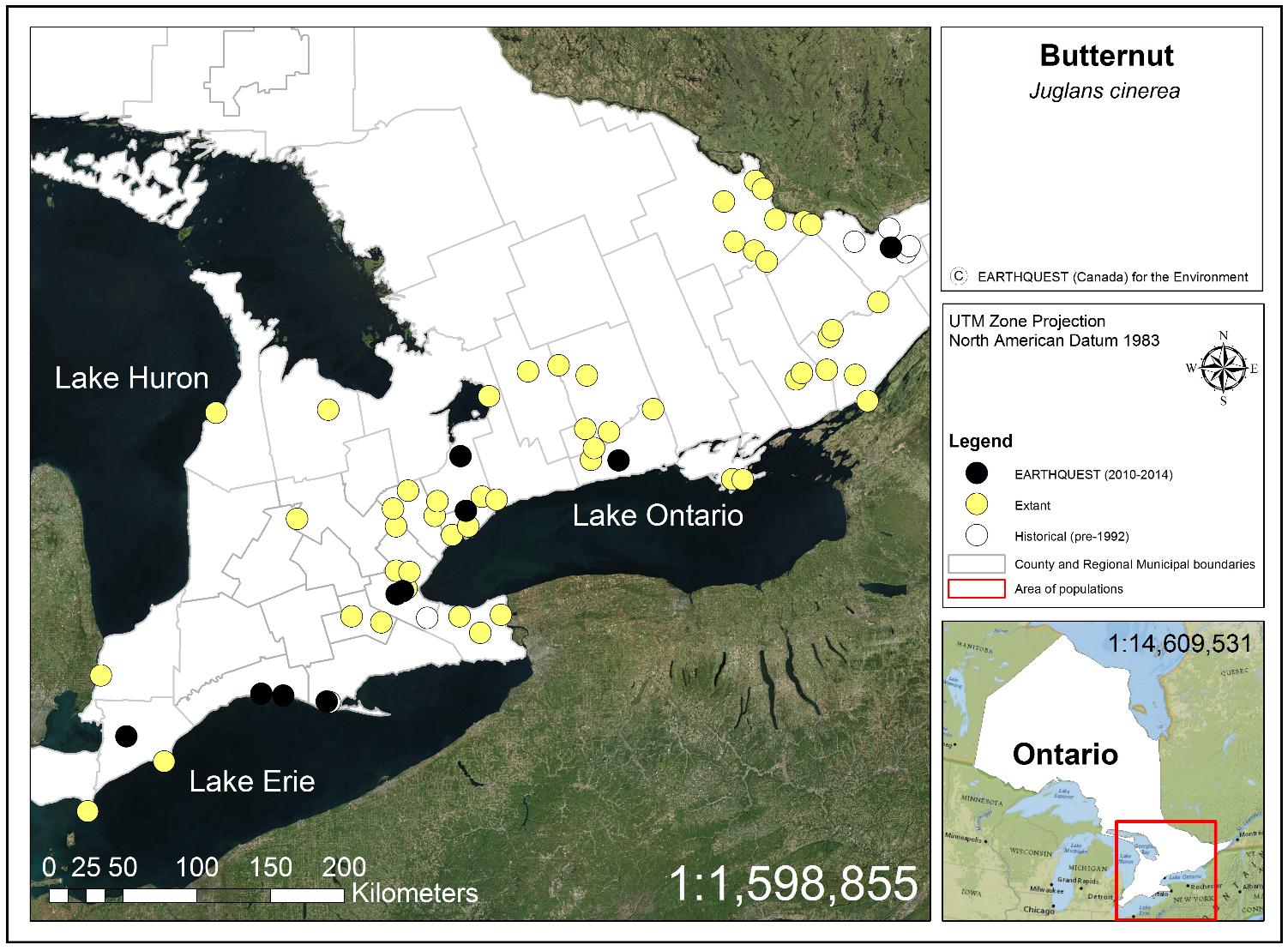
Spring | |||||||||||||||||||
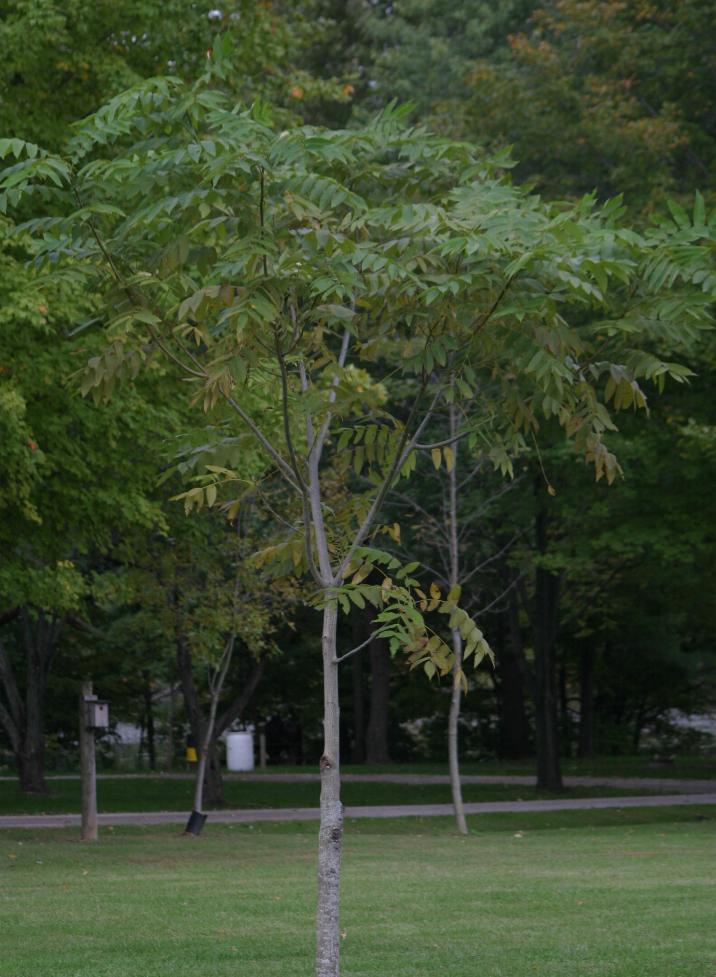 |
Flower (male/pollen)
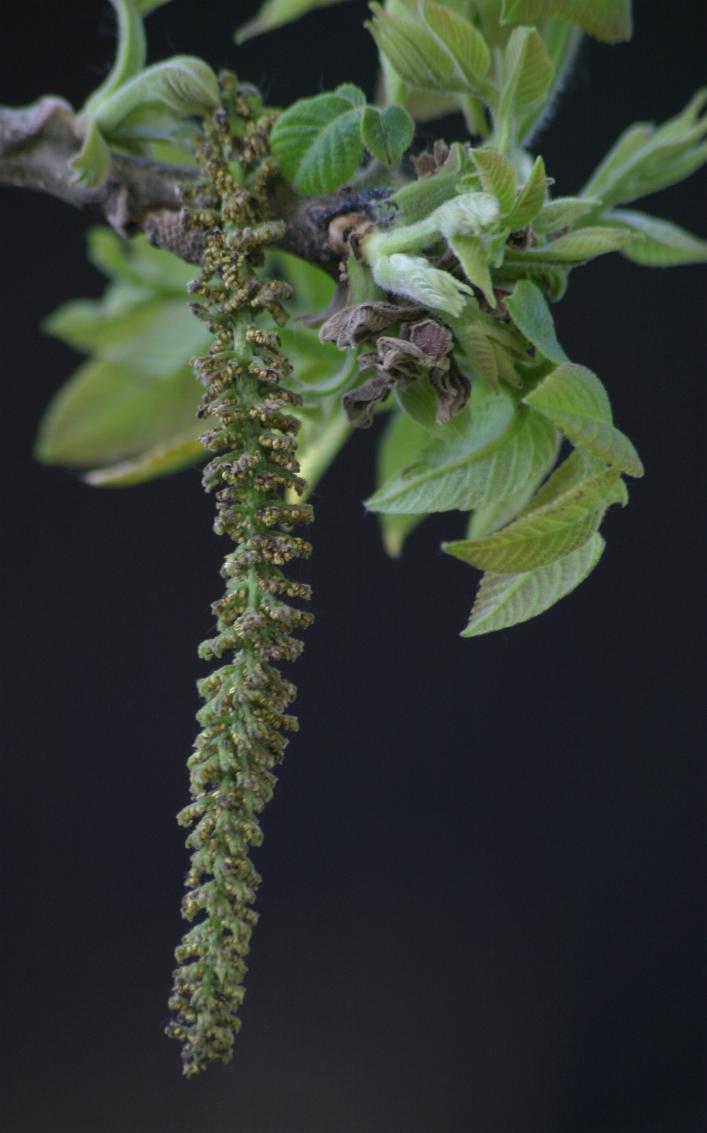 Photo: Dave Jolly |
Flower (female/catkin)
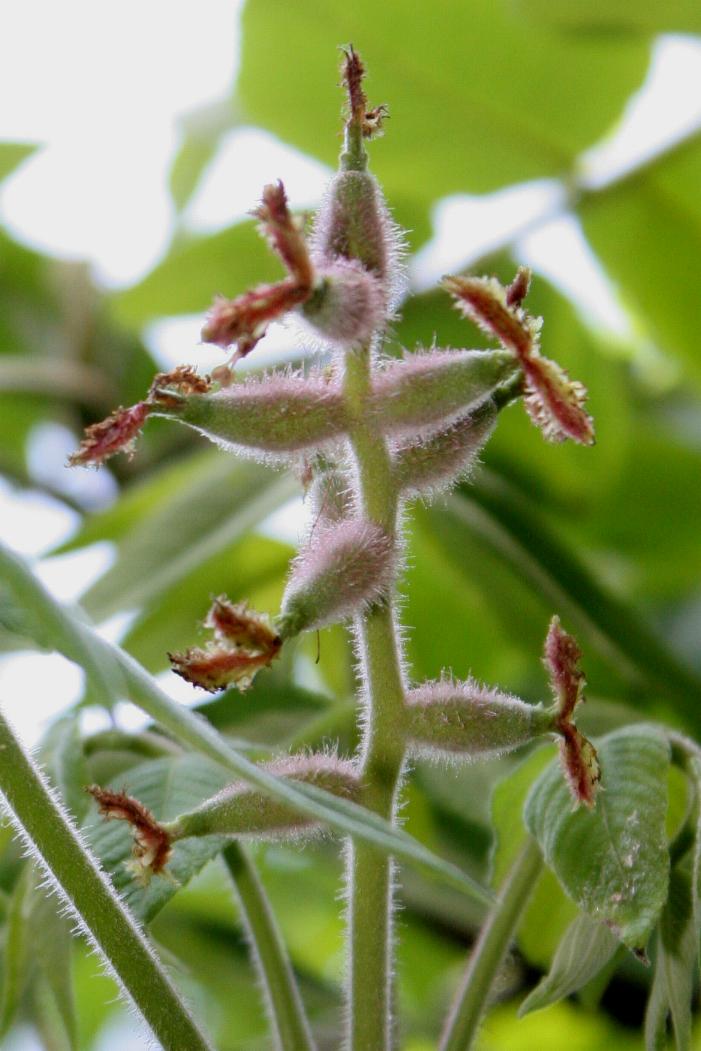 Photo: Dave Jolly |
|||||||||||||||||
Summer | |||||||||||||||||||
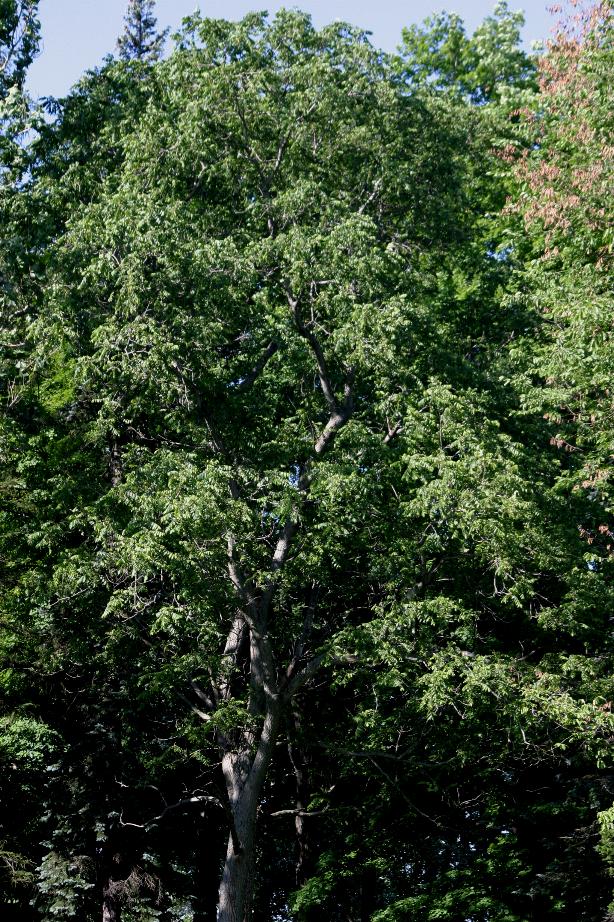 |
Leaves
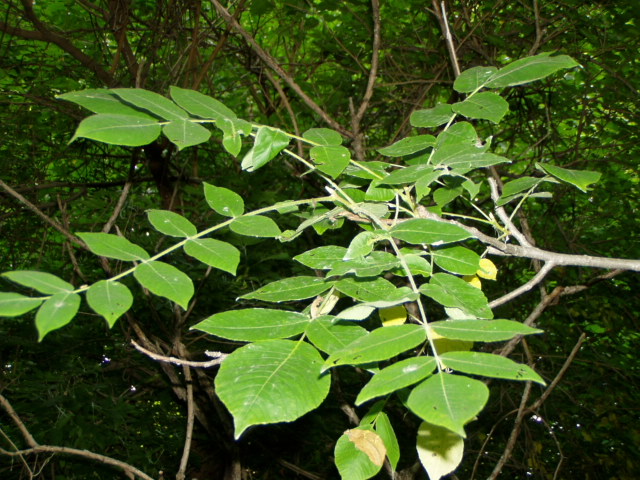 Photo: Dave Jolly | Canker on non-retainable tree
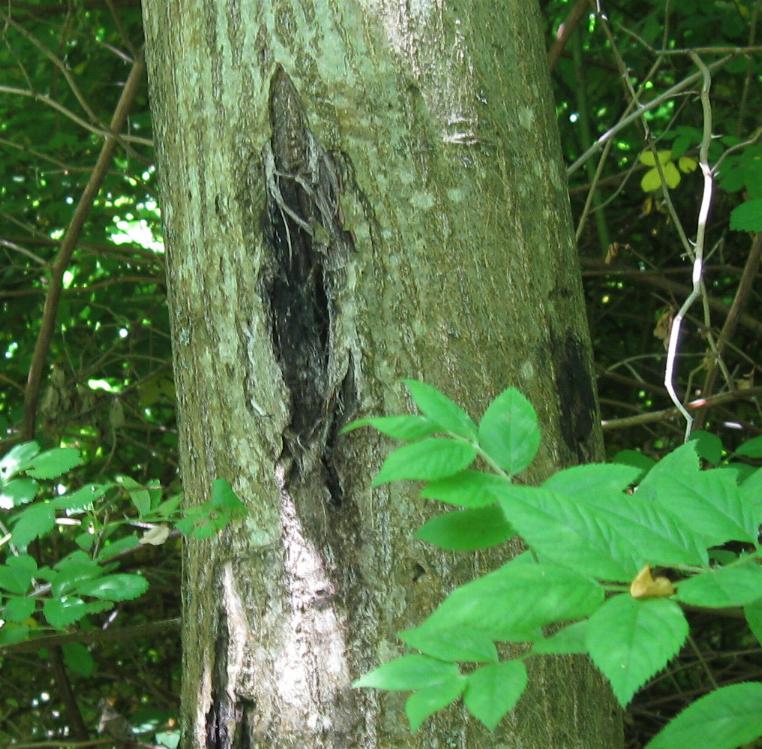 Photo: Dave Jolly Fall | Fruit
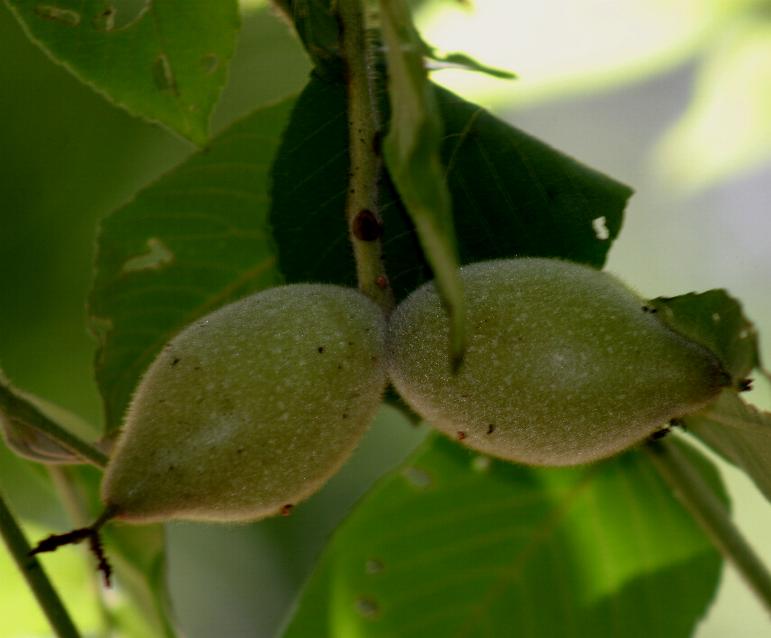 Winter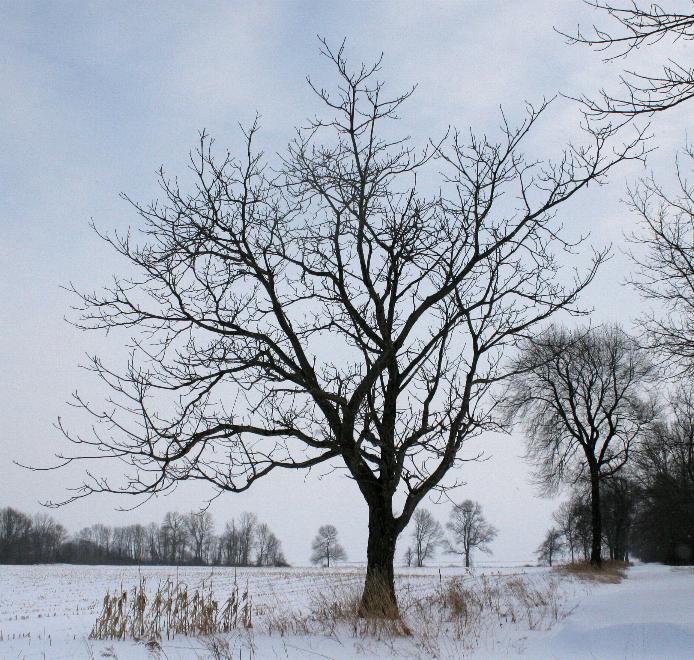 Bark
| 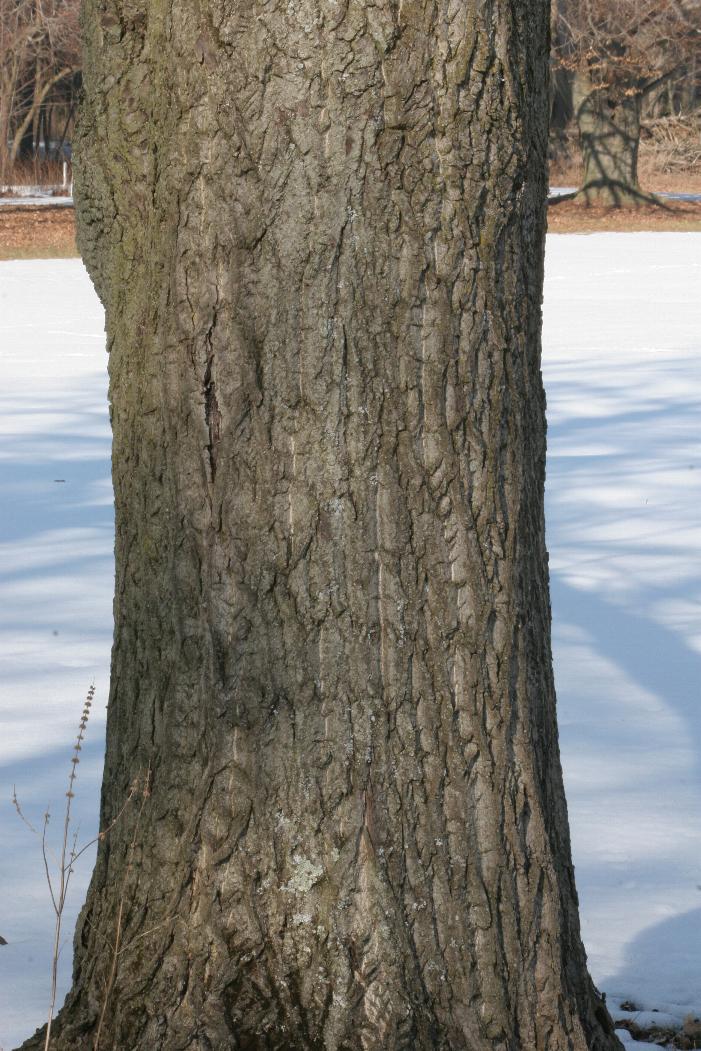 Photo: Dave Jolly Leaf scar & buds
|
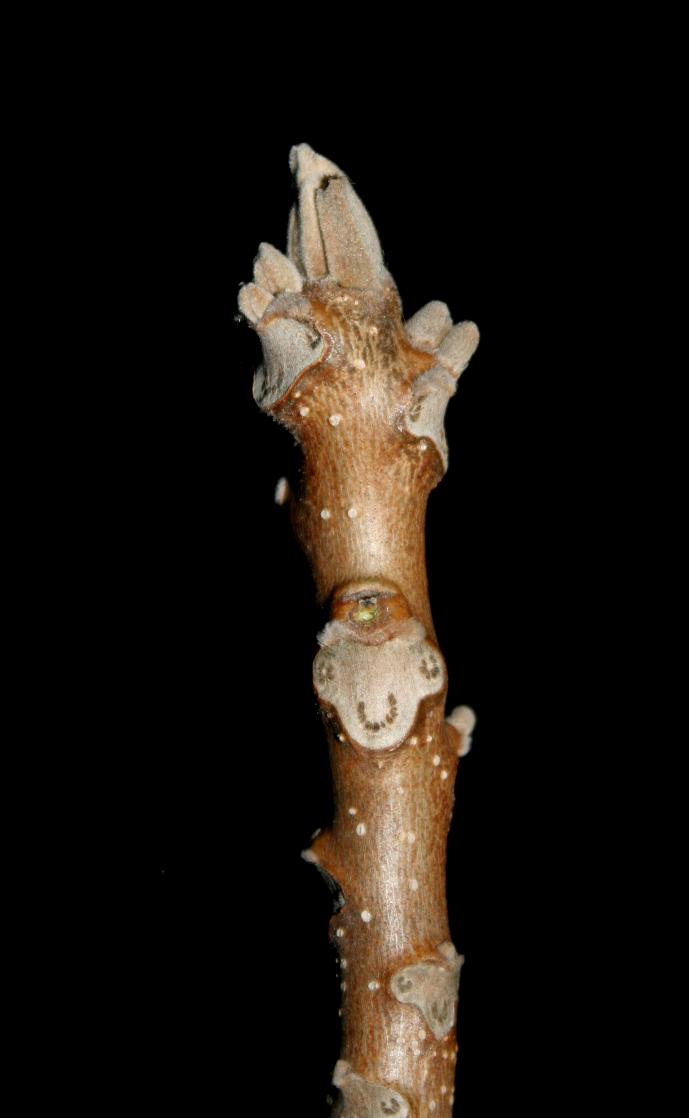 Photo: Dave Jolly Pith
|
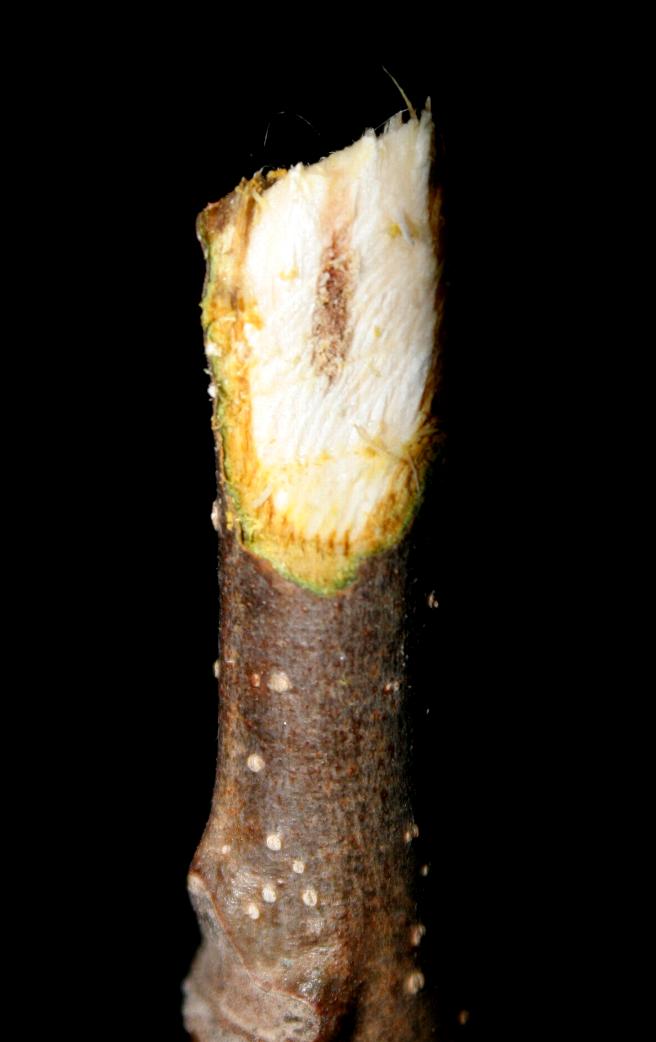 Photo: Dave Jolly
Flowering period: Flowering date records extracted from the EARTHQUEST Plants of Ontario database representing 27 records over a 8 year period show flowers begin blooming May 4th lasting until June 14th (Jolly 2015b).
5 Second Rule Identification: Useful for performing Butternut Health Assessment: large, oddly pinnately compound leaves; downy whitish hairs on underside, larger terminal leaflet, more leaflets than Black walnut (Juglans nigra). Greenish stripes runningvertically down bark of young trees (Jolly 2015a).
Biology and Ecology: A short lived shade intolerant species that live up to 80 years (Farrar 1996), and may be found growing in a wide variety of habitats (COSEWIC 2003). Considered a habitat generalist by most authorities. Leaves are yellowish green and densely hairy on the underside (Farrar cited in COSEWIC 2003, Jolly 2015a). Twigs are stout, hairy, and yellowish orange in colour (Farrar cited in COSEWIC 2003) with a chambered pith (Hosie cited in COSEWIC 2003). The
terminal bud is elongated, about 1.0 to 1.5 cm long, somewhat flattened and blunt tipped with lobed outer scales (Farrar cited in COSEWIC 2003). Lateral buds are much smaller and rounded, often with more than one bud above the leaf scar (Hosie cited in COSEWIC 2003). The upper margin of the leaf scars are flat and bordered with hair (Farrar cited in COSEWIC 2003). Known to hybridize with other members of the Junglans Genus such as Japanese Walnut (Juglans ailantifolia). As a trigger to a Butternut Health Assessment (BHA), performed by an Ontario Ministry of Natural Resources and Forestry (MNRF) certified BHA assessor, hybrids are distinguished from pure Butternuts by the following key visual identification characteristics:
i. pith is light brown, cinnamon, or tan coloured;
Population Size: Approximately 32 Natural Heritage Information Centre (NHIC) records exist in Ontario, with about 500 submitted by Forest Gene Conservation Association land owners between 1996 and 1998. Eigth records are new, extracted from the EARTHQUEST Plants of Ontario database (Jolly 2015b). Seventeen Element Occurrence (EO) records exist were gleaned from the NHIC EO database (COSEWIC 2003).
Habitat & Soils: Butternut grows best on rich, moist, well-drained loams often found on stream bank
sites but may be found on well-drained gravelly sites, especially those of limestone origin (Rink cited in COSEWIC 2003). Ecological Land Classification data is lacking for most counties, but available for the following vegetation types, based on EARTHQUEST Plants of Ontario database records; Dry – Fresh Oak – Hardwood Deciduous Forest Type (FODM2-4), Black Raspberry Deciduous Shrub Thicket Type (THDM2-8A), Dry – Fresh Sugar Maple Deciduous Forest Type (FODM5-1), Mixed Plantation (TAGM2), Fencerow (TAGM5), Fresh - Moist Forb Meadow Ecosite (MEFM4), Red Maple Mineral Deciduous Swamp Type (SWDM3-1), Fresh – Moist Green Ash - Hardwood Lowland Deciduous Forest Type (FODM7-2), and Low Density Residential (CVR_1).
Threats: Butternut canker (Sirococcus clavigignenti-juglandacearum) is the primary threat facing the Canadian Butternut population. There are approximately 7,000 to 17,000 trees currently infected in Ontario, and New Brunswick (COSEWIC 2003). Secondarily, harvesting of trees, habitat loss and degradation, other diseases, insects and exotics, excessive seed predation, and hybridization with exotic Juglans species were cited as a potential threat to this species (Poisson and Ursic 2013).
Recovery: The Ontario Ministry of Natural Resources initiated a butternut conservation project for southern Ontario in 1994 that included such activities as reviewing the scientific literature, conducting field inventories, documenting populations, grafting sections, and collecting data from potentially resistant individuals (Nielsen cited in Poisson and Ursic 2013).
Biometrics: May grow to 25 m in height and 75 cm dbh (Farrar 1996). Leaves are evenly pinnately compound with 11 - 17 stalkless elliptical leaflets, measuring 30 - 60 cm in length (Farrar 1996). Pollen flowers contain 8 - 12 stamens within catkins that may be 6 - 15 cm in length (Farrar 1996). Fruits expand from fertilized ovaries and are elongated (Farrar 1996) and pointed at both ends (Jolly pers obs. 2016) and may be sticky to the touch.
Environmental Protection: This species is protected as a Schedule 1 tree under the federal Species at Risk Act. Butternut received designation as endangered and protection by the COSEWIC in 2003.
Confusing look-a-likes: Black Walnut (Juglans nigra, but with fewer leaflets that lack hairy undersides, rounded fruit and darker brown coloured pith (Jolly 2015a).
Plant Associates: Ground layer species include; White Trillium (Trillium grandiflorum), Spotted Geranium (Geranium maculatum), Jack-in-the Pulpit (Arisaema triphyllum), and Common Bedstraw (Galium aparine).
References:
Distribution: To date, current, historical and extirpated populations have been found in 25 counties, or tier regional municipalities; Brant, Bruce, Chatham-Kent, Elgin, Essex, Frontenac, Grey, Halton region, Hamilton, Lanark, Leeds & Grenville, Middlesex, Peel, Perth, Peterborough, Prince Edward, Niagara region, Norfolk, Northumberland, Ottawa-Carlton, Simcoe, Toronto, Renfrew, Victoria, and York region.
$150 CAD + shipping and handling Photo: Dave Jolly for more information please click on; Ontario SAR & Rare Plants book
Senior Instructor/Ecologist/Consultant & President D. Jolly, B.Sc.
| |||||||||||||
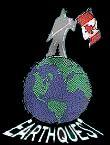 EARTHQUEST (Canada) for the Environment
EARTHQUEST (Canada) for the Environment
